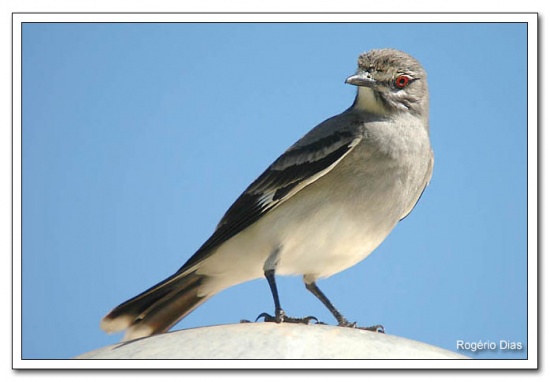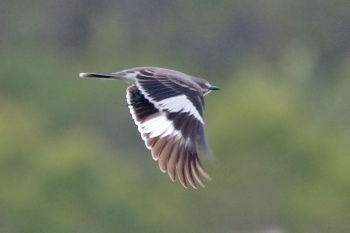- Nengetus cinereus
Xolmis cinerea
Xolmis cinereus
Identification
22·5–23 cm
Ashy-grey above with white above the lores. The wings are mostly black with a white speculum when at rest which is seen as a very conspicuous white "V" in flight. The tail is black with a broad white tip.
The throat is white with a broad dark grey malar stripe while the breast is ashy-grey and the belly is white.
Distribution
In South America they are found in the ranges noted under the subspecies below.
Taxonomy
This is a polytypic species[1] consisting of 2 subspecies.
Subspecies
- N. c. cinereus:
- N. c. pepoaza:
Habitat
Grasslands with scattered trees and cerrado; city parks.
Behaviour
Diet
Their diet consists of insects. They sit on an open perch and drop to the ground to catch their prey.
References
- Clements, J. F., T. S. Schulenberg, M. J. Iliff, B.L. Sullivan, C. L. Wood, and D. Roberson. 2013. The eBird/Clements checklist of birds of the world: Version 6.8., with updates to August 2013. Downloaded from http://www.birds.cornell.edu/clementschecklist/download/
- Avibase
- Handbook of the Birds of the World Alive (retrieved May 2014)
Recommended Citation
- BirdForum Opus contributors. (2024) Gray Monjita. In: BirdForum, the forum for wild birds and birding. Retrieved 1 November 2024 from https://www.birdforum.net/opus/Gray_Monjita
External Links
GSearch checked for 2020 platform.





